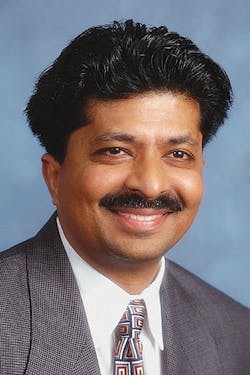Interview with the OPC Chief Architect (sidebar)
In this exclusive interview with Automation World Editorial Director Jane Gerold, Mody discusses the new OPC Unified Architecture specification.
AW: What is driving the development of the new OPC Unified Architecture (UA)?
Mody: Increasingly, users have had to deal with many different data models for real-time, historical and alarm information. And, they want security functions added to the OPC specification. OPC UA will provide a common data model environment and will leverage security, Microsoft .Net and Web Services for XML (eXtensible Markup Language).
To develop the UA standard, the OPC Foundation has brought together experts from supplier and user companies. Our goal is to combine all of the previous OPC specifications for clients and servers into OPC UA, while at the same time providing a migration path for the existing users.
AW: Originally, the OPC UA spec was to have been released by the end of 2004. Why the delay?
Mody: Incorporating security into the UA specification has added a whole new dimension of complexity to the development process. And some of the Web Services specifications, such as WS-I (Web Services Interoperability) are just now being released. This has definitely impacted our development timetable and release date.
OPC UA is targeted for release in the second half of 2005, but this is dependent on the development and release of Microsoft specifications for Web Services and security. In the meantime, users and suppliers should continue to implement the existing OPC specifications. The OPC Foundation will provide the wrappers to make sure all specs are compatible.
AW: How have users been involved in the development of UA?
Mody: The Foundation is putting together a customer council of representatives from end-user companies. The UA committee has also worked closely with the Microsoft Manufacturing Users Group (MS-MUG), whose members include 3M and Procter & Gamble, among others, to help define user needs.
AW: As OPC UA is rolled out, how will you protect the investment that users and suppliers have made in the existing OPC specifications?
Mody: The OPC UA specification development is a huge effort in terms of coordination—it will impact every other OPC specification. However, migration plays an extremely important role. We want to make sure we’re solving the right problems and challenges, and provide compelling reasons for users to move to UA. One of the best ways to do this is to ensure that UA addresses the users’ top concerns.
The most critical areas of concern for OPC users are: unified name space, alarming, security, performance, interoperability and integration.
AW: A unified name space is a single hierarchical structure to organize data objects. Why is this a user concern?
Mody: A unified name space is a huge benefit from the customer’s perspective. The user doesn’t need to care where the data is coming from. He can just say, "Give me the speed of the mixer," and not have to worry about how to get the data out of several different APIs (Application Programming Interfaces). It’s a unified way of getting data.
AW: What other benefits does OPC provide to automation suppliers and manufacturing end users?
Mody: For automation suppliers, having OPC means they can focus on their core competencies, and not spend additional time and money developing device drivers. For example, Wonderware supports almost 50 different device drivers, but our customers have hundreds of different devices on the plant floor. By using OPC drivers, we can focus on our visualization, batch and modeling software, while ensuring that the software works in all environments.
For users, the big benefit is the interoperability that OPC gives them. This is the beauty of standards. Users can take advantage of open systems, but be assured of connectivity and interoperability among these systems.
Without OPC, we would have to create a community of software developers to support all of the different systems and devices. OPC saves the automation industry tens of millions of dollars every year.
See the story that goes with this sidebar: Many Devices, One Solution

